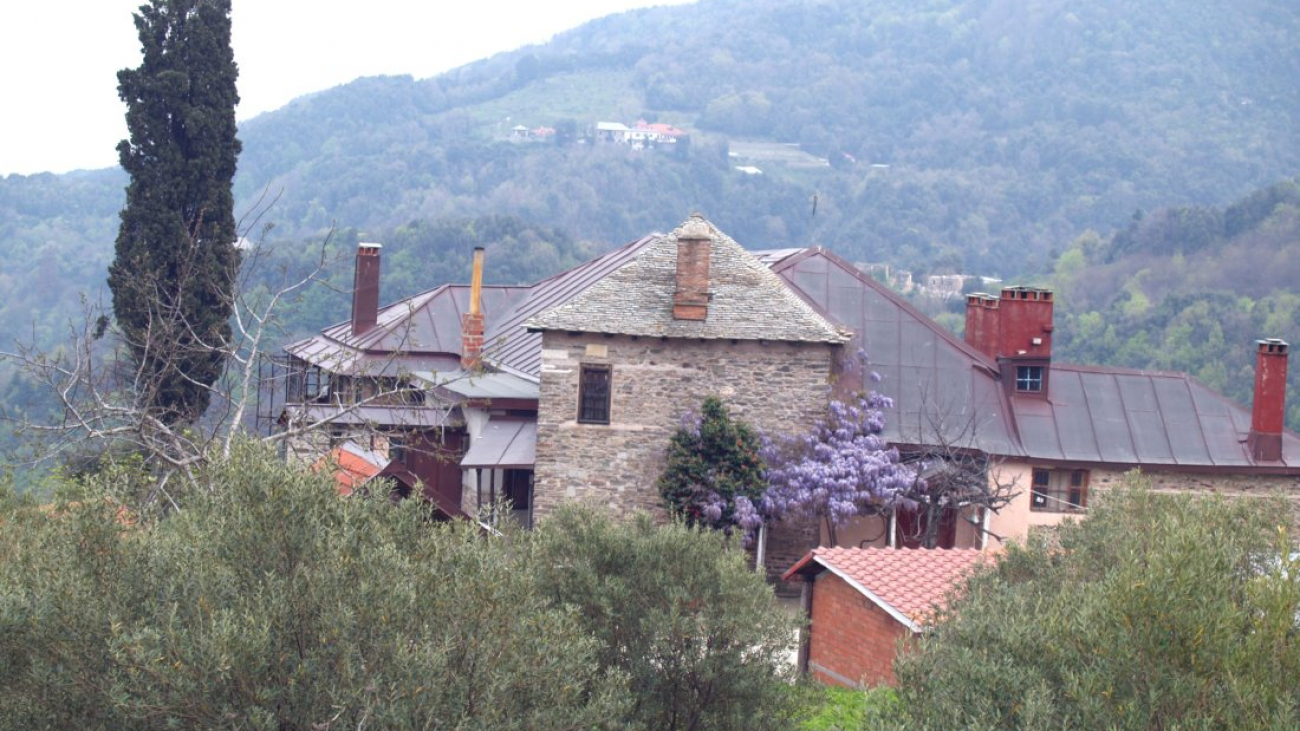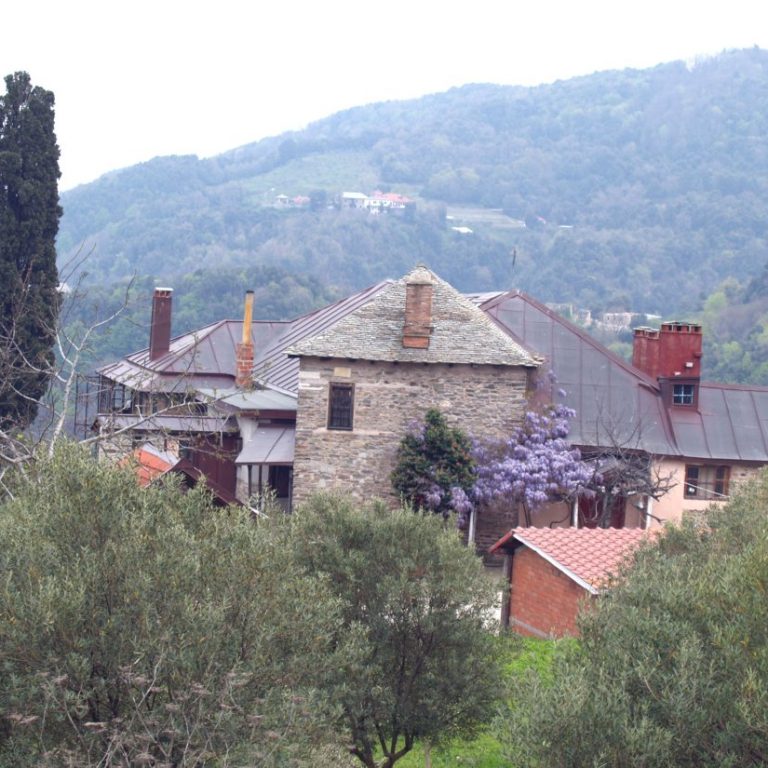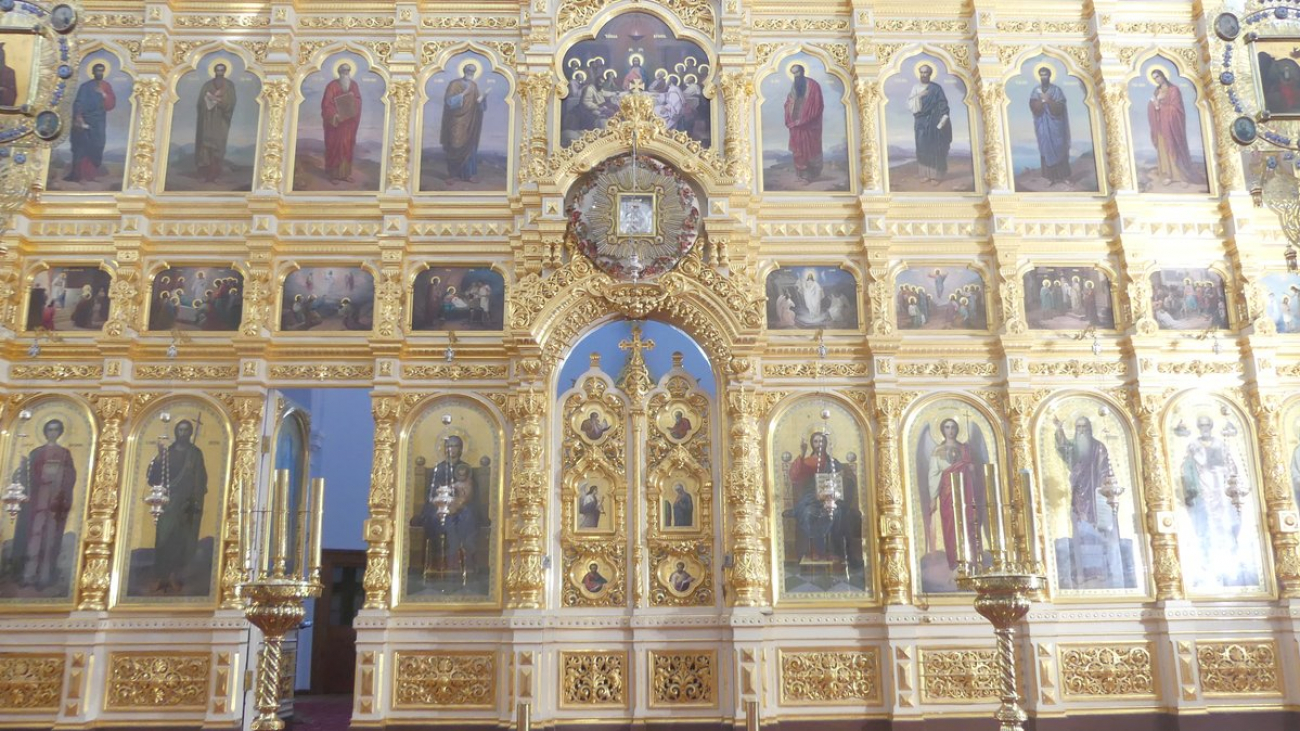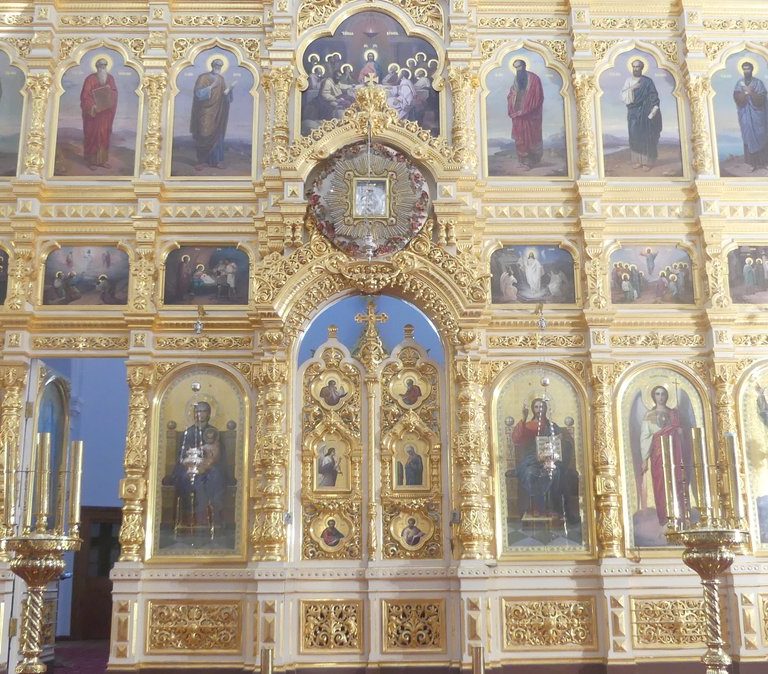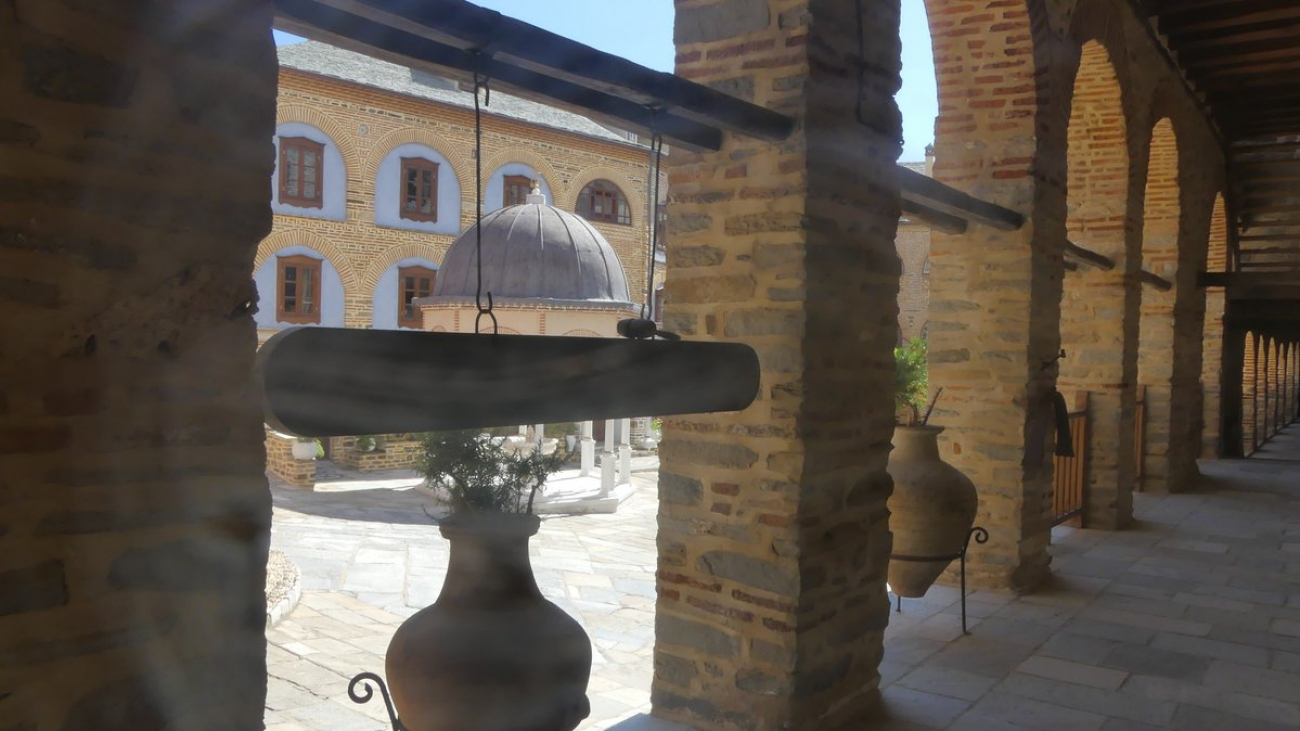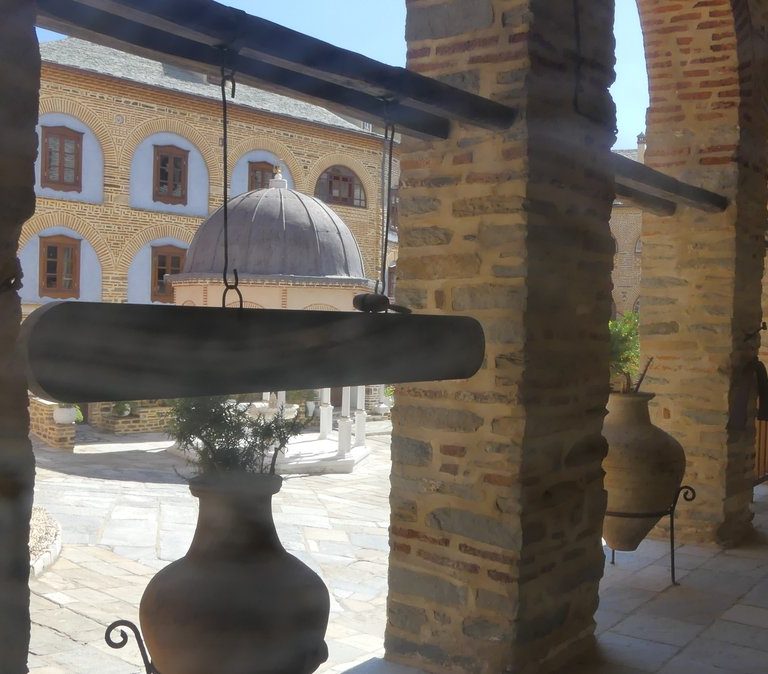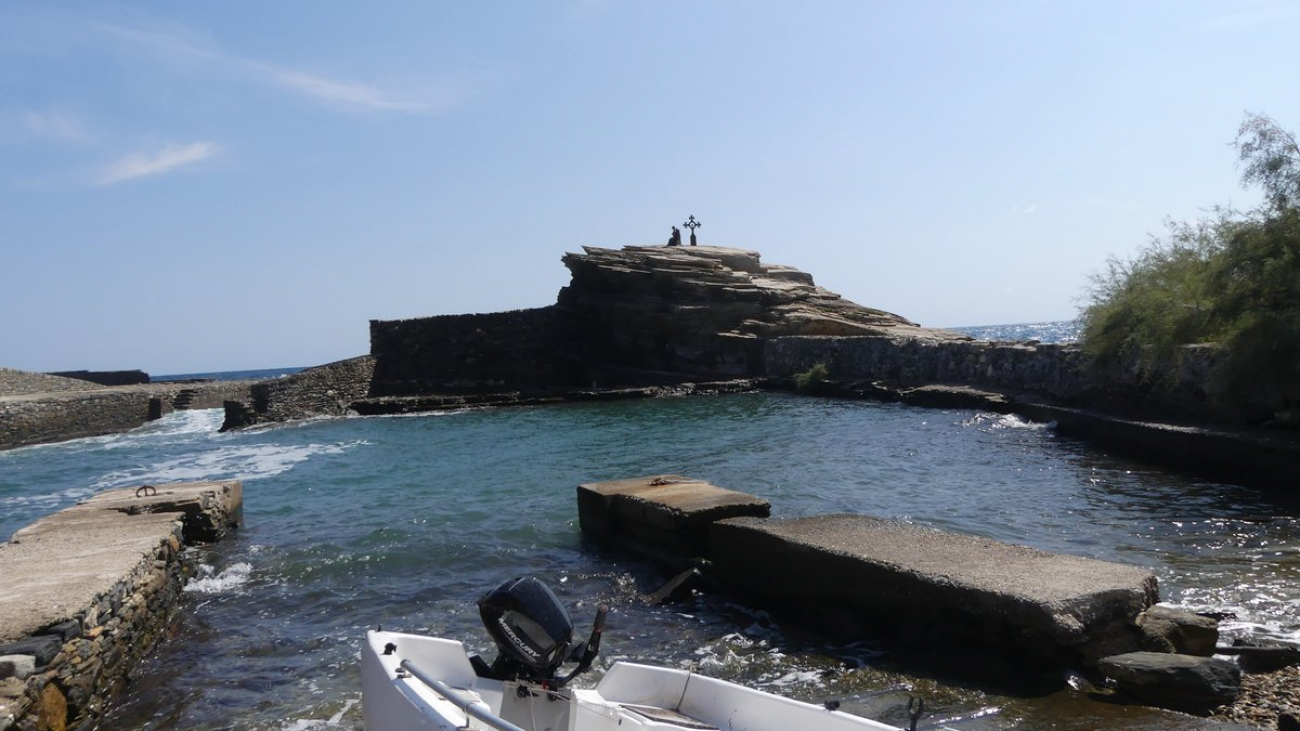Old ΜΟΝΥΔΡΙΑ (monydria, 'monastic units')
The Monastery was founded around the second half of the 14th century in an area where six monastic houses had been built at an earlier time. With the passage of time and for various reasons – mainly because of the repeated raids by pirates – these units had declined or disappeared, or in some cases, operated as Cells. The founders of the Monastery had planned from the beginning to protect these properties by incorporating them, either through their purchase or via donation, as dependencies. The six monastic units which are recorded in a document in the archives of the Monastery from 1392 refer to the following six cells or dependencies:
1) St Auxentios. The existence of this Cell has been known since 1287, when one of its monks, Theodoulos, is mentioned in a document of the Great Lavra Monastery as being an overseer of the Agios Oros community. The unit is located northwest of the Monastery, in the place where the Cell of St. Procopios stands today.
2) St Dimitrios of Kynopodos was known as early as the year 1048, and shares a border with the monastic unit of Falakros. A written Memorandum by the Protos of Agios Oros Ioannis Tarchaniotis dating to November 1107 regulates the border between the two units. This document is the oldest surviving original document in the archives of the Monastery.
3) Ravdouchos. This was the first acquisition of the founders of the Monastery in Agios Oros. According to the 1357 chrysobull of the Emperor Ioannis V Palaiologou, the Cell of Ravdouchos, which had been totally destroyed by raids of the Ottomans, was given by the Protos Theodoros to the two brothers with the obligation for them to rebuild it. The Monastery of Ravdouchos (or Ravda) is mentioned in a document in the Vatopedinos Monastery of 998, while in the wider region a Skete had also developed, known as 'the cloister of Ravda.'
4) The Saviour. This is mentioned among the dependencies of the Monastery, and it is theorized that because of its early existence in the area, the tradition that attributes the founding of the Pantokratoros Monastery to the reign of Alexios I Komninos arose. The exact location of the unit is unknown, and it is not possible to identify it with certainty as the Monastery of Theodoros, which shares a border with the Falakros, Xulourgos, and Kunopodos monasteries, and which appears in a 1107 document as belonging to the farm of Sotiris. It is probable that the unit was located a short distance from the Monastery.
5) Fakinos. This unit is located at a distance of half an hour south of the Monastery, close to today's vineyards, at the border of the Stavronikita Monastery, and was dedicated to the Presentation of the Virgin Mary. The founder of the unit was Ioannis Fakinos, who is mentioned for the first time in 985, and who served as Protos of Agios Oros from 991-996. Today, only the church with frescoes from the 17th century survive, along with the ruins of the old monastery.
6) Falakros. Falakros is located at a distance of half an hour southwest of the Monastery, at the border with the Vatopedios Monastery, and is recorded in Athonite sources from 991-1398 as the Monastery of Asomatos or Falakros. It probably received its nickname from the Abbot and likely founder, Nikiforos Falakros, who is mentioned in a 991 document from the Great Lavra Monastery. Today, the ruins of its cathedral and its tower survive. Mounted inscriptions from the year 1647/8 which mention the Abbot Jeremiah of the Pantokratoros Monastery were found in the north wall of the nave (an area which today would be the Sacristy).
In the area of Karyes, near the Koutloumousios Monastery, the Pantokratoros Monastery also has as dependencies the Cells of the Annunciation, St Nikolaou (Damaskinos), the Dormition, and the Birth of the Virgin Mary. According to Barsky, the Monastery also had as a dependency an abandoned Skete of the Dormition, most likely today's Bogoroditsa, at the border with the Vatopedios Monastery. Despite there being no document in the Monastery's archives to confirm this, this claim is supported by the existence in the Sacristy of the Monastery an undated seal of this Skete in the Slavic language. It is possible that the Skete came into the possession of the Monastery for a short period of time, and then later was restored to the St. Panteleimonos Monastery.
1) St Auxentios. The existence of this Cell has been known since 1287, when one of its monks, Theodoulos, is mentioned in a document of the Great Lavra Monastery as being an overseer of the Agios Oros community. The unit is located northwest of the Monastery, in the place where the Cell of St. Procopios stands today.
2) St Dimitrios of Kynopodos was known as early as the year 1048, and shares a border with the monastic unit of Falakros. A written Memorandum by the Protos of Agios Oros Ioannis Tarchaniotis dating to November 1107 regulates the border between the two units. This document is the oldest surviving original document in the archives of the Monastery.
3) Ravdouchos. This was the first acquisition of the founders of the Monastery in Agios Oros. According to the 1357 chrysobull of the Emperor Ioannis V Palaiologou, the Cell of Ravdouchos, which had been totally destroyed by raids of the Ottomans, was given by the Protos Theodoros to the two brothers with the obligation for them to rebuild it. The Monastery of Ravdouchos (or Ravda) is mentioned in a document in the Vatopedinos Monastery of 998, while in the wider region a Skete had also developed, known as 'the cloister of Ravda.'
4) The Saviour. This is mentioned among the dependencies of the Monastery, and it is theorized that because of its early existence in the area, the tradition that attributes the founding of the Pantokratoros Monastery to the reign of Alexios I Komninos arose. The exact location of the unit is unknown, and it is not possible to identify it with certainty as the Monastery of Theodoros, which shares a border with the Falakros, Xulourgos, and Kunopodos monasteries, and which appears in a 1107 document as belonging to the farm of Sotiris. It is probable that the unit was located a short distance from the Monastery.
5) Fakinos. This unit is located at a distance of half an hour south of the Monastery, close to today's vineyards, at the border of the Stavronikita Monastery, and was dedicated to the Presentation of the Virgin Mary. The founder of the unit was Ioannis Fakinos, who is mentioned for the first time in 985, and who served as Protos of Agios Oros from 991-996. Today, only the church with frescoes from the 17th century survive, along with the ruins of the old monastery.
6) Falakros. Falakros is located at a distance of half an hour southwest of the Monastery, at the border with the Vatopedios Monastery, and is recorded in Athonite sources from 991-1398 as the Monastery of Asomatos or Falakros. It probably received its nickname from the Abbot and likely founder, Nikiforos Falakros, who is mentioned in a 991 document from the Great Lavra Monastery. Today, the ruins of its cathedral and its tower survive. Mounted inscriptions from the year 1647/8 which mention the Abbot Jeremiah of the Pantokratoros Monastery were found in the north wall of the nave (an area which today would be the Sacristy).
In the area of Karyes, near the Koutloumousios Monastery, the Pantokratoros Monastery also has as dependencies the Cells of the Annunciation, St Nikolaou (Damaskinos), the Dormition, and the Birth of the Virgin Mary. According to Barsky, the Monastery also had as a dependency an abandoned Skete of the Dormition, most likely today's Bogoroditsa, at the border with the Vatopedios Monastery. Despite there being no document in the Monastery's archives to confirm this, this claim is supported by the existence in the Sacristy of the Monastery an undated seal of this Skete in the Slavic language. It is possible that the Skete came into the possession of the Monastery for a short period of time, and then later was restored to the St. Panteleimonos Monastery.

